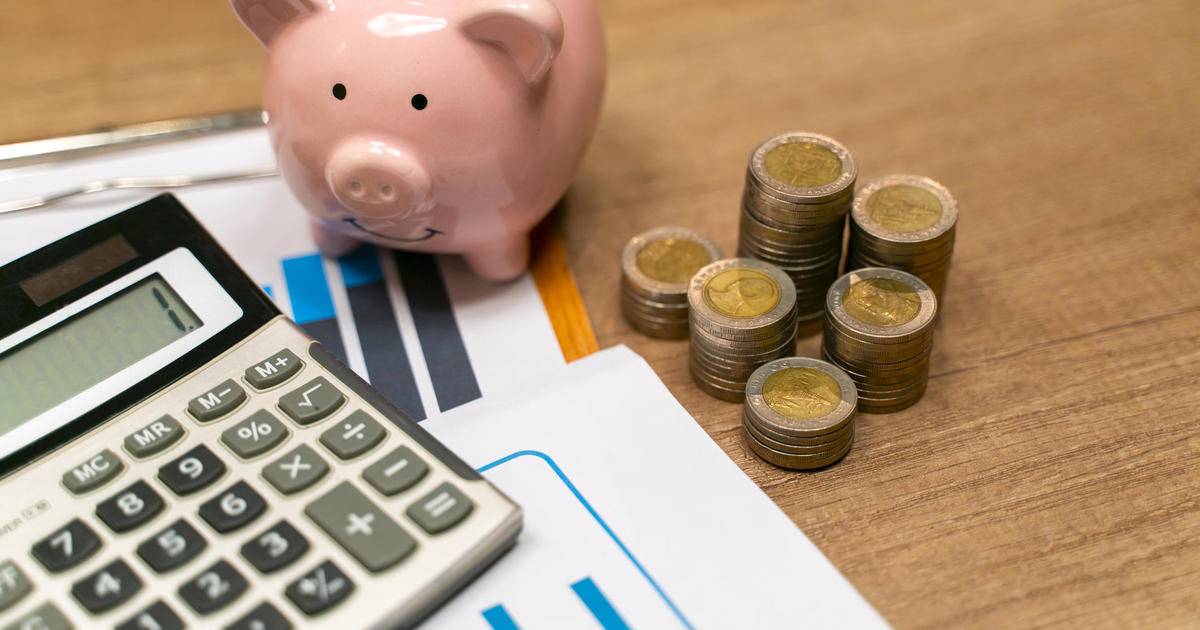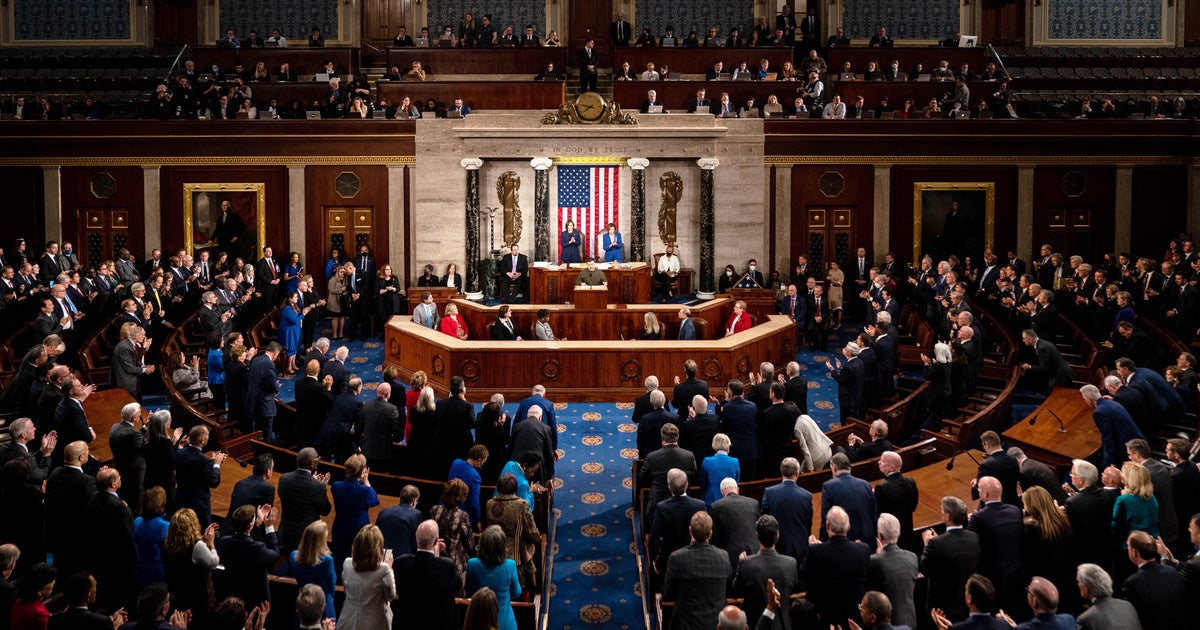CBS News
Is 5% interest good for a high-yield savings account?

Getty Images
There’s no question that it’s important to save money. After all, there’s no way to predict when the next significant emergency expense might arise. And, when it does pop up, your savings will become your financial safety net.
Moreover, even foreseeable expenses aren’t always affordable. For example, you may need to save for years to make a down payment on a home.
But it can be challenging to save money effectively. After all, if your savings aren’t earning a return that beats the current inflation rate, you lose buying power over time. A high-yield savings account may be an effective way to solve this problem, but is a 5% interest rate competitive on this type of account?
Compare today’s top high-yield savings accounts now.
Is 5% interest good for a high-yield savings account?
According to the FDIC, the national average savings account interest rate is currently 0.47% — but that average is inclusive of traditional savings accounts. So how much of a return can you earn on a high-yield savings account?
Some of the best high-yield savings account interest rates in today’s market range from 4.35% to 5.25%. So, if you earn 5% on yours, you’re not only beating the national average savings account return by more than 10 times, but you’re enjoying one of the most competitive rates on the leading high-yield savings account options.
So, what does 5% interest mean in terms of cash returns? Let’s say you put $25,000 into a high-yield savings account. Assuming there are no changes to interest rates, you would earn $1,250 after one year, for a total account balance of $26,250.
After five years, your cash returns would be $6,907.04, for a total balance of $31,907.04. It’s important to keep in mind, though, that high-yield savings accounts usually have variable interest rates. So, there’s a high likelihood that your return rate will change over time.
Put your money to work with a high-yield savings account today.
What should you use a high-yield savings account for?
“A high-yield savings account provides a place to park funds that will provide a much greater rate of return than a standard” savings account, says Brandon Robinson, president and founder of JBR Associates, a financial service provider in Plano, Texas.
Robinson says the first reason you should have a high-yield savings account “is to have money put aside for an emergency fund that you can quickly access.”
“A rule of thumb for this fund is to keep between six and 12 months of living expenses as a balance,” Robinson says.
“Another reason to open a high-yield savings account is to build a sinking fund,” says Robinson. “A sinking fund is money set aside for a specific purpose (not emergency) like a vacation, wedding, special event, making a large purchase or paying off debt.”
So, whether you’re saving money for an emergency or a large planned expense, a high-yield savings account is a compelling way to earn a meaningful return on your unused cash.
Why a high-yield savings account is a good place to store idle cash
There are several benefits to saving money with a high-yield savings account. Some of the most important include:
- High returns: “Because of the higher than normal interest rates currently available with high-yield savings accounts, you have the potential to earn much more in interest than your typical savings account,” explains Stacey Black, lead financial educator at BECU.
- On-demand access: “Unlike CDs, your funds aren’t tied up for a set time period when using a high-yield savings account,” says Black. That means you’ll be able to access your money if you need it for an emergency.
- Safety: High-yield savings accounts are also relatively safe. They typically come with FDIC or NCUA insurance on balances up to $250,000. Though, if your savings balance is over $250,000, it would likely be wise to spread it over multiple accounts keeping each balance under $250,000. This will ensure that your entire savings balance is insured.
Black went on to explain that “for those living paycheck to paycheck, the amount of APY paid on a savings account may not seem like the highest priority.”
However, she says “regardless of what your savings balance is, you could be leaving ‘free money’ on the table. Just make sure to read the fine print to find out if there are any minimum balance requirements or fees.”
Don’t leave free money on the table. Open a high-yield savings account now.
The bottom line
A high-yield savings account that pays 5% interest is highly competitive. Not only does it significantly outpace the average savings account interest rate, but it’s on the high end of the scale even for high-yield savings products. Compare leading high-yield savings accounts now if you’re not earning 5% or more on your unused cash.
CBS News
How Latino voters could impact Election Day 2024 results

Watch CBS News
Be the first to know
Get browser notifications for breaking news, live events, and exclusive reporting.
CBS News
City of Milwaukee recounting some ballots, Wisconsin officials say

Watch CBS News
Be the first to know
Get browser notifications for breaking news, live events, and exclusive reporting.
CBS News
Live House election results for 2024 races

Hakeem Jeffries could make history if Democrats retake majority
House Minority Leader Hakeem Jeffries of New York could make history as the first Black speaker if Democrats win the majority.
It wouldn’t be the first time he’s made history. Jeffries became the first Black lawmaker to lead a party in Congress when he was elected minority leader in January 2023, succeeding former House Speaker Nancy Pelosi as the top Democrat in the lower chamber. His election also made him the first House Democratic leader to be born after the end of World War II.
Jeffries was first elected to Congress in 2012.
House GOP leadership to hold elections on Nov. 13
House Republicans will hold leadership elections on Nov. 13 after Congress returns from recess. It’s a quick turnaround because sluggish returns from California and races that are too close to call or are contested could blur the picture of which party has the majority on Nov. 13.
If Republicans lose control of the House, there could be a shakeup in GOP leadership. It’s unclear if House Speaker Mike Johnson of Louisiana would run for minority leader or if anyone would challenge him.
House Democrats haven’t said when they’ll hold their leadership elections.
— Scott McFarlane and Caitlin Yilek
GOP infighting a staple of the 118th Congress
Republicans took back control of the House in the 2022 midterm elections after four years of Democratic rule. But GOP infighting has made it difficult to govern with a razor-thin majority amid early retirements and the expulsion of Rep. George Santos, whose seat was later picked up by a Democrat.
In January 2023, former House Speaker Kevin McCarthy of California finally won the speaker’s gavel after 15 ballots amid a prolonged — and public — fight with conservatives who demanded concessions, foreshadowing the limits of his power over a fractured party.
His deal with far-right Republicans to allow a single member to trigger a no-confidence vote to remove the speaker came back to haunt him nine months later after he relied on the votes of House Democrats to temporarily avert a government shutdown. Eight Republicans voted with all Democrats to remove McCarthy, making it the first time in U.S. history a House speaker was ousted by such a motion.
Speaker Mike Johnson of Louisiana succeeded McCarthy after three weeks of chaos caused by the GOP’s inability to coalesce around a candidate. Though Johnson has faced similar issues as McCarthy and has had to rely on Democratic votes to pass legislation, he has survived in the role longer than his predecessor. Democrats stepped in to rescue Johnson from an ouster attempt in May.
House control last flipped during presidential election cycle in 1952
The last time control of the House flipped in a presidential election year was 1952. Republicans won the House and Dwight D. Eisenhower was elected to his first term in the White House.
Battle for control of the House
Of the 435 House seats on the ballot, about 40 are seen as competitive, according to the Cook Political Report, a nonpartisan election analysis site that considers 22 of those races toss-ups. Of those 22 seats, 10 are held by Democrats and 12 by Republicans. Of the other 21 competitive seats, 13 are lean Democrat and eight are lean Republican.
Republicans currently have 220 seats. Democrats have 212. There are three vacancies due to the deaths of Rep. Sheila Jackson, a Texas Democrat, and Rep. Bill Pascrell Jr., a New Jersey Democrat, and the early retirement of Rep. Mike Gallagher, a Wisconsin Republican.
For Democrats to take control of the chamber they’d have to hold on to their 212 seats and the two vacancies from deaths, as well as pick up four seats.
It’s unlikely to be that easy, however. Redrawn congressional maps in North Carolina mean three seats held by Democrats are poised to be easily won by Republicans.
But the swing toward Republicans is blunted in part by redrawn congressional districts in Louisiana and Alabama that are likely to be won by Democrats under the new lines.
— Caitlin Yilek, Hunter Woodall and Alexandria Johnson




